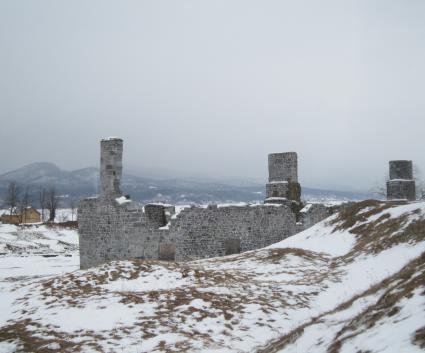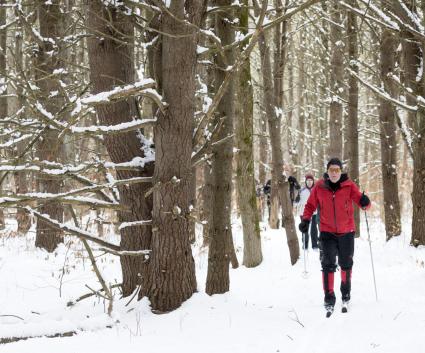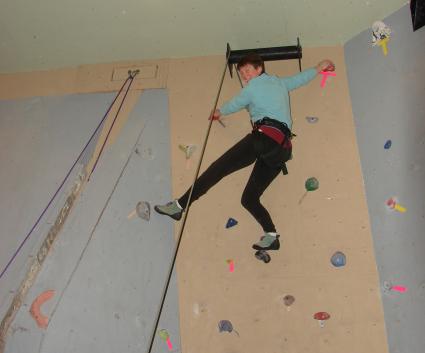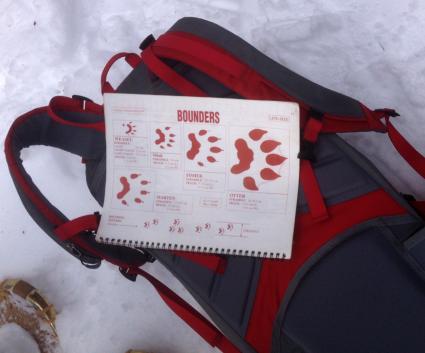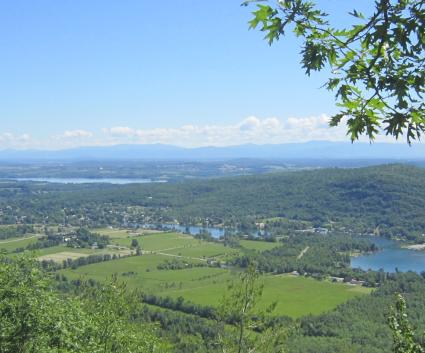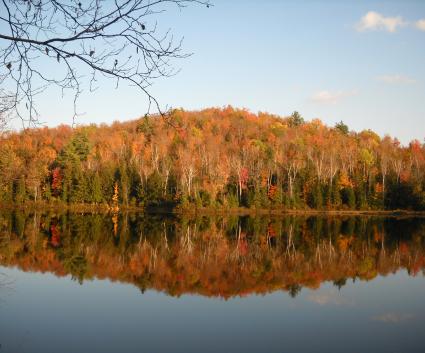Today the Adirondacks are the destination for enthusiastic and athletic individuals from around the world. They come here wishing to feel the thrill of adventure that only our unique winter landscape can offer. Whether you are into skiing, ice climbing, nordic skating, or snowshoeing, many excellent opportunities await the winter visitor.
But what of Adirondackers from a century ago? Did these hardy inhabitants of our rustic frozen landscapes hole up inside, huddling next to the crackling fire, waiting for the spring thaw? No siree Bob! People were exactly the same then as they are now. They were looking for the thrill of speed and the sheer fun of a day out on the snow and ice, and maybe, just maybe, a little romance would be in the offering as well.
Skate sailing is a sport almost as old as the ice skate itself. Originating in the northern countries of Europe, sail skating was established in North America before there even was a United States. Northern New York, with its many lakes and canals was ideal for making skate sailing a popular activity. The Dutch settlers quickly spread the sport beyond the ethnic and geographic areas of Albany and Schenectady and the activity found its way to the Adirondacks where it has been enjoyed for well over a century.
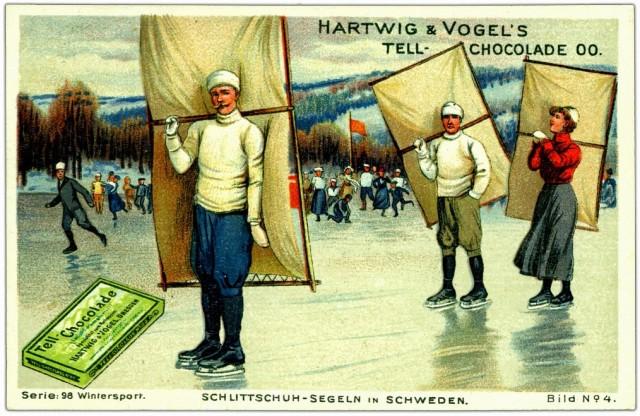
This early chocolate advertisement from Sweden shows a very basic design of the skate sail, a small frame with a cross-member to which a muslin tarp has been lashed. This would be a good design for a smaller space and a slower pace — your basic weekend outing model.
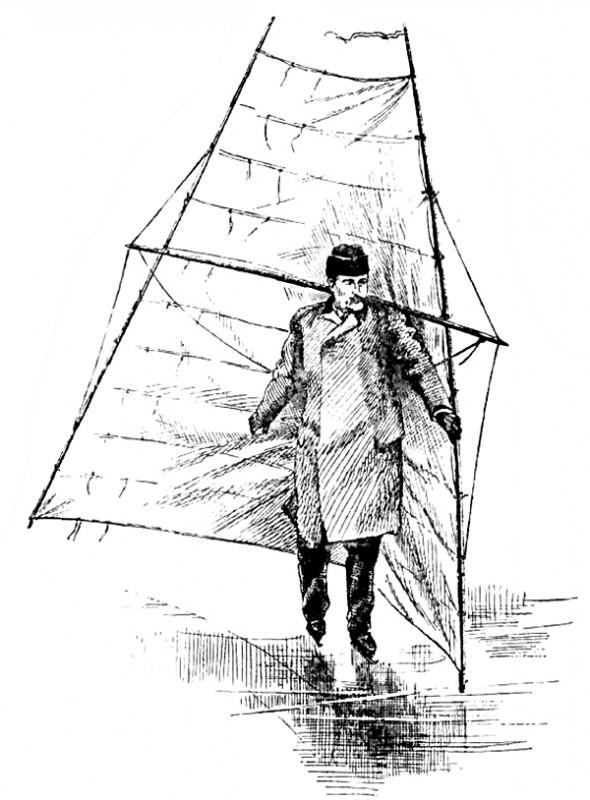
Here we see an example of a more complicated rig, capable of serious speed and distance.
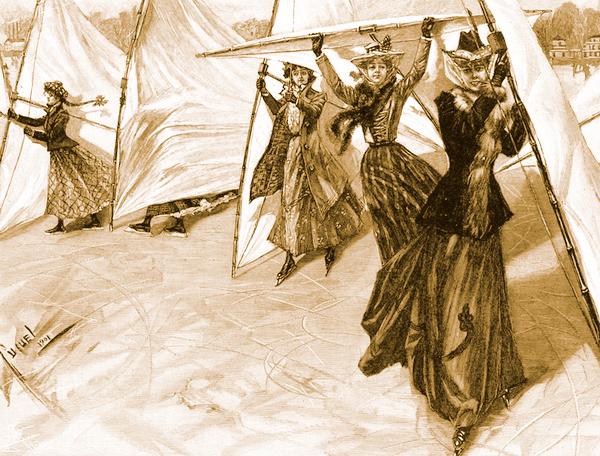
Skating and, by extension, skate sailing have some interesting cultural history associated with them. Both were acceptable forms of exercise for ladies, even though it can be a bone jarring sport at high speed.

More fascinating than the inclusion of women in the sports of ice skating and skate sailing is the fact that these were some of the first activities where unattached men and women of polite society could commingle unchaperoned. You would be correct in supposing there were more than a few roving eyes on the ice.
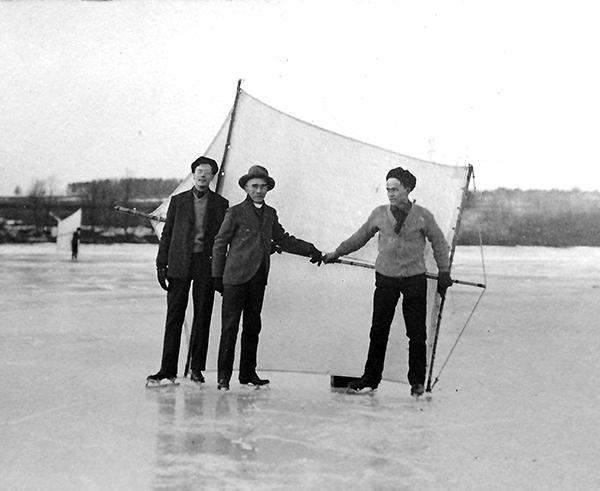
Throughout these photos you will notice a long parade of individual skate sail styles. Since skate sails were homemade, even though there are specific styles — each rig was able to be tailor-made.

A fellow in tie and topcoat, perhaps just off from work, is about to put some miles between him and the crowds. If this was the beach, you could imagine him shouting “Out of my way, Hodads and Grimmies!”

Winter sports afforded the fashionable young lady an opportunity to display her sartorial expertise, as this lass from the 1920s demonstrates.

Another woman from the same time period is dressed more for action than fashion, I’m guessing you’d do well to stay out of her path!
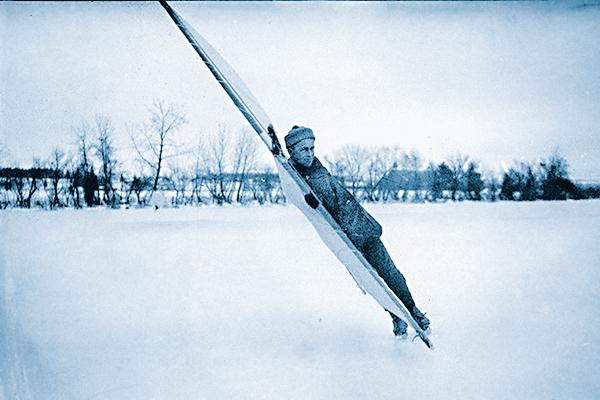
Pictured here is a 1912 photo of John S. Apperson, one of the Adirondacks’ most famous preservationists and conservation activists. He brought some renown to the sport with the design of his own sail, known as the “Apperson Sail” or the “Schenectady Sail.” Beginning with bamboo poles and salvaged tarps, he continued to tinker with his design for several years before settling on the finished design in 1908 with sturdy spruce spars.

You just know this Hot Dog is going to figure-eight around you as soon as you land on your keister. Would you feel better knowing he built it from broomsticks and bedsheets? Publications of the day offered a wide array of plans so that the home craftsman could make up his skate sail as simple or as complicated as he liked. “The Boy Mechanic” and “The Scientific American Boy” not only offered plans, but advice on how to sail them.
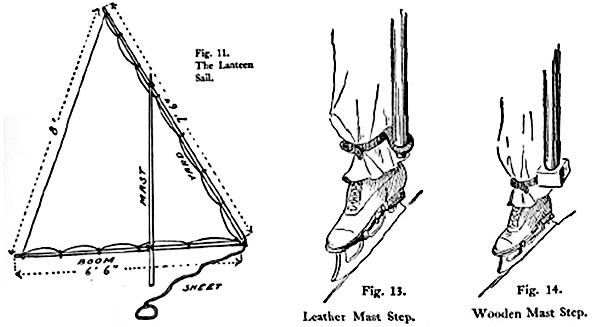
The Lanteen style of skate sail is constructed with a mast that anchors to your ankle. I’m wondering how that turned out, taking a header on the ice at 45 miles an hour — ouch!
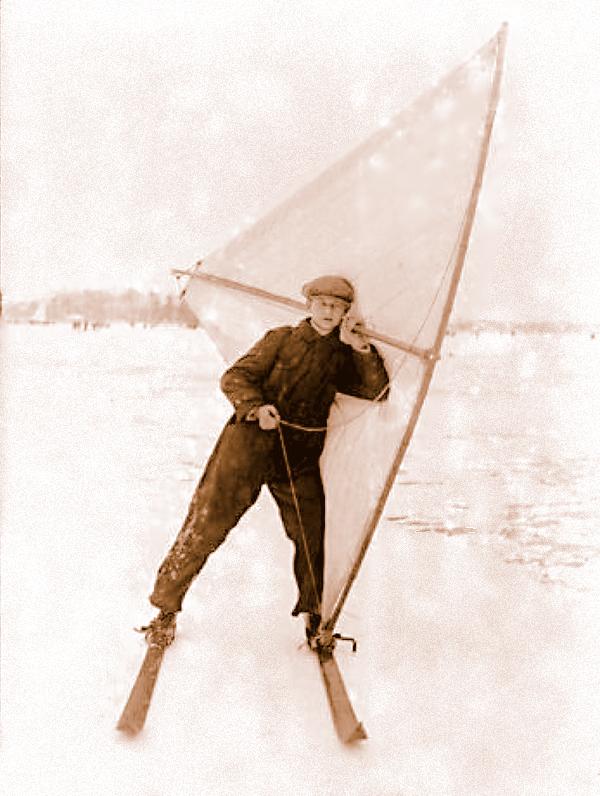
Snow and rough ice on the lake? No problem! Just mount your Lanteen sail to some skis!
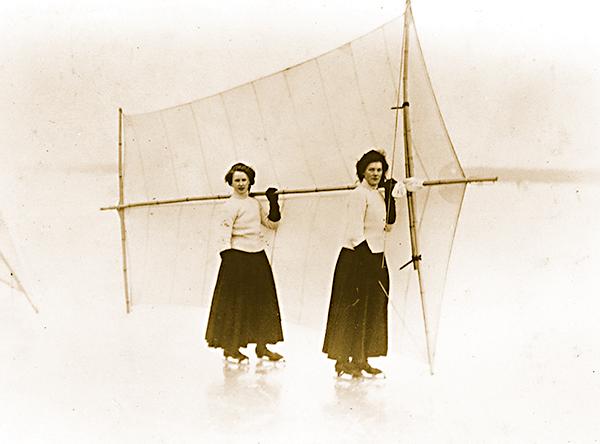
Here we see some thoroughly modern women about to rip up the miles at a frightening pace with a Swedish style skate sail.

Notice the plans for this Swedish skate sail include a tether almost exactly like a modern surfboard leash. Held in the hand and used to help steer, it also kept you and your sail together if you fell. Let’s admit it, once the wind gusts take your sail more than two miles down the lake beyond your reach, it’s best just to limp home and accept your losses.
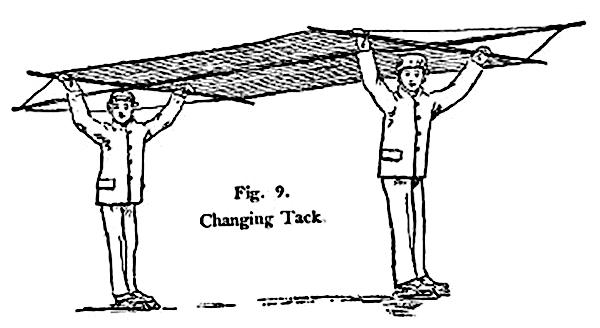
Successful skate sailors must possess the same knowledge of tacking into the wind as summer boaters. Pictured here is the technique necessary to change tack with a Swedish skate sail.
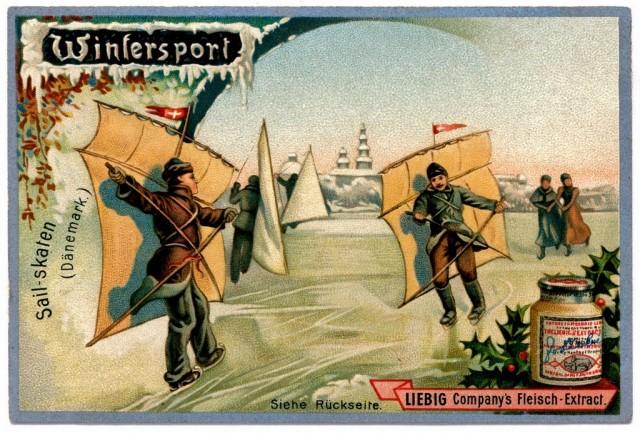
This early advertisement for a yeast supplement shows the Danish style skate sail in all its glory. The crossed spars and double rigging make this the cadillac of skate sails. Power, speed, and maneuverability all combined in an elegant style. The top flag decries “Hey, world, I’ve made it!” as much as any luxury hood ornament can. If the oceans had ever frozen over, rest assured the Danes would have crossed them on these.

This Danish skate sail is the top of the line rig you would end up with if you followed the plans in a 1912 book aimed at preteen boys. If a farm boy with a pocket knife and some kindling can make this, I’m pretty sure that you, with the advantage of state-of-the-art power tools and ultra-modern materials are up for the challenge too. Will I be seeing you down at the lake next winter?
Ready to explore more of the Adirondack Coast? Find great outdoor adventures, cozy lodging, and authentic local dining while you're here.
Header photo courtesy iceskatesmuseum.com



